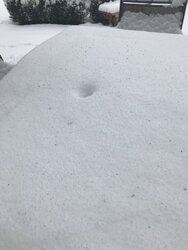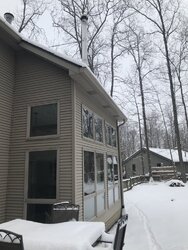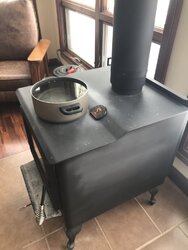Hello All,
I run my 30-NC pretty hot at times. Stove top temp up to 750 degrees F, then I'll turn the blower on. After a fresh snow, I discovered black dust/ash on a table top in the snow. It looks to me like it must've come from the chimney. I have my chimney swept every season by a professional.
I've attached a photo of the dusty table, a photo the of the table in proximity to the chimney and a photo of the thermometer location on my stove top. Am I running too hot?



I run my 30-NC pretty hot at times. Stove top temp up to 750 degrees F, then I'll turn the blower on. After a fresh snow, I discovered black dust/ash on a table top in the snow. It looks to me like it must've come from the chimney. I have my chimney swept every season by a professional.
I've attached a photo of the dusty table, a photo the of the table in proximity to the chimney and a photo of the thermometer location on my stove top. Am I running too hot?



Last edited by a moderator:

